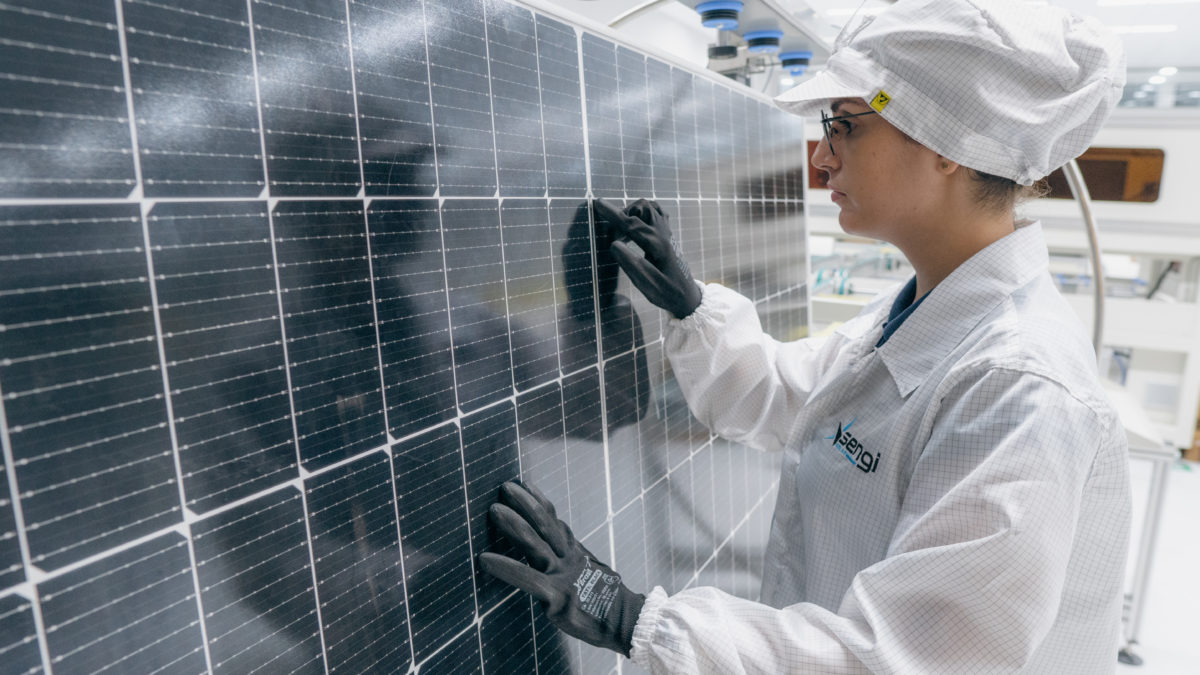Sengi Solar. a PV module manufacturer, said in early September that it plans to invest BRL 440 million ($85 million) to set up two solar panel factories in Brazil. The two sites will have an annual production capacity of around 1 GW of modules.
The first unit, in Cascavel (Paraná), is already in operation. The second unit, in Ipojuca (Pernambuco), is scheduled to start operations in the first half of 2023. The Brazilian company told pv magazine that it plans to open a third factory in 2024, to reach of 1.5 GW of annual production.
At the moment, the factories are focusing on module assembly, with cells imported from China.
“When we reach the third factory in 2024, we believe that a Brazilian cell factory will be feasible, due to the volume of other module manufacturers, and our 1.5 GW,” said Everton Fardin, director of operations and engineering at Sengi Solar. “We already entered the feasibility process, including studies on the environmental impact of bringing a cell factory to Brazil.”
The company says it wants “100% autonomy” in the potential cell factory. It has pointed to the mining of quartz in Brazilian states such as Minas Gerais as a way to eventually stop buying wafers from China.
“Who knows? Maybe in 10 years we will have the whole supply chain, from quartz, silicon metal, solar silicon, ingots, wafers and cells here in Brazil,” said Murilo Bonetto, R&D manager at Sengi Solar. “What we are seeing is a cyclical process of re-industrialization in Brazil, in which we invest in photovoltaic module manufacturing, this increases the output volume, which in turn makes raw material factories viable, which then increase the volume of module manufacturing.”
The company is also investing heavily in R&D.
“We estimate to invest BRL 70 million in R&D by 2023 alone, and this will enable us to develop a technological hub where one of the main research areas will be in module tropicalization,” Bonetto said.
Sengi Solar is also developing modules with TOPCon n-type cells produced by Jolywood and Tongwei. It is targeting January 2023 as its goal to surpass the 700 MW barrier and enter the market with high-power modules.
Its plant in Cascavel is producing bifacial and double glass PERC modules ranging from 440 W to 670 W. The company sees TOPCon as a transition technology between PERC and heterojunction (HTJ).
“Studying the cell supply chain, we find that TOPCon will be the next step after PERC because the investment that cell factories will have to make is much smaller than for HTJ. We are studying HTJ, but we are betting on TOPCon n-type for the next modules,” said Bonetto.
Sengi Solar decided to set up domestic module production after the Brazilian authorities added the remaining inputs for PV manufacturing to the PADIS industrial program in January. The government incentive helps to level out the price of domestically produced PV modules with imported ones, but Brazilian panels are still 15% to 20% more expensive, according to Sengi Solar. International convergence on the 182 mm and 210 mm wafer sizes was another reason that gave the company decided to invest now.
The first module was produced in the factory just nine months after Sengi Solar was established. When the two factories are working at full capacity, they are expected to employ 300 to 350 employees each, according to the company. “The entire product development and project process was done by Brazilians,” said Fardin.
This content is protected by copyright and may not be reused. If you want to cooperate with us and would like to reuse some of our content, please contact: editors@pv-magazine.com.



In addition, Sengi Solar is working on the development of modules that use TOPCon n-type cells made by Jolywood and Tongwei. Very interesting!